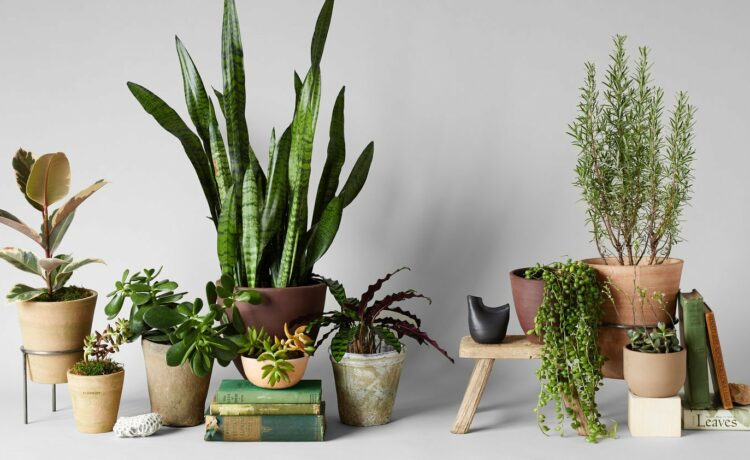Plants have a presence and aura of their own. The plant kingdom is poles apart from the animal kingdom and humankind. Some admirable characteristics of the plant kingdom are stillness, larger-than-life-size, heavenly beauty, oxygen-producing ability, generosity, and, most importantly, positivity.
If you have ever walked in a forest or a botanical garden, you will automatically feel engulfed in positivity. Since we can’t live in treehouses nowadays, the best way to incorporate plants around you inside your home is to place some indoor plants.
Indoor plants offer plenty of benefits and are great for creating the right kind of ambiance and balance indoors, whether in the home, balcony, office, or even cafe. But you must be selective in choosing the right plants that can survive in low light. Some plants may take some time to grow but can stick around for a few years.
So, here is a guide on low-light plants that are ideal for house plants.
Low-Light Plants for Your House
1. Guzmania (Tufted Airplant)
- Scientific name: Guzmania monostachia
- Water requirement: Filtered water
- Survival in low light: Yes
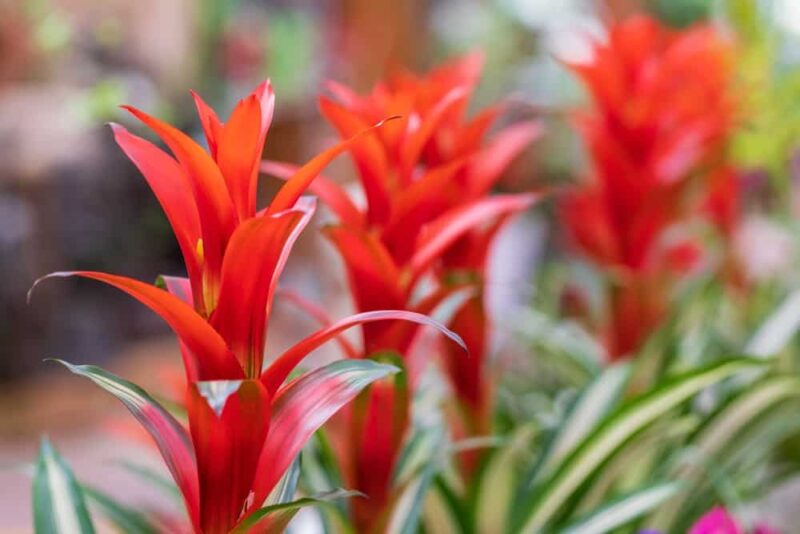
Bromeliad Guzmania can thrive in low light, contrary to popular belief that it requires plenty of light to produce its vivid leaf colors and pigmentation. These evergreen perennials are native to Northern, Central, and Southern America. They need warm and humid temperatures.
You can grow them indoors in ceramic or terracotta pots and decorate the pot with pebbles and stones. Keep the soil moist and add some balanced fertilizer. Guzmanias prefer low, indirect light compared to other bromeliads.
2. Pothos
- Scientific name: Pothos repens
- Water requirement: Medium watering
- Survival in low light: Yes
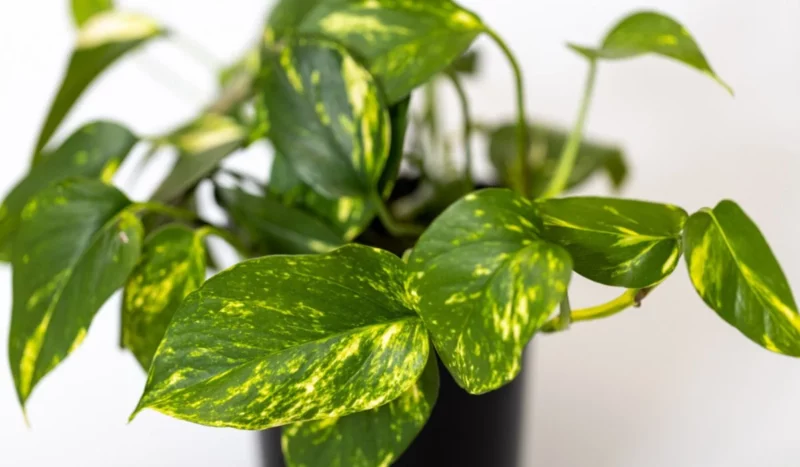
Native to the Indian subcontinent, China, Southeast Asia, Australia, and various locations over the Pacific and Indian Oceans. Pothos is a genus of flowering plants. You can place your plant anywhere from your living room to your bathroom.
They don’t need direct sunlight and can manage with medium watering if the soil is rich in nutrients. Further, you can fertilize the soil every quarter. Pothos plants can be toxic to cats, dogs, and kids if only ingested but can be rectified with proper medical care.
3. Bamboo
- Scientific name: Bambusa vulgaris
- Water requirement: Can grow in water or damp soil
- Survival in low light: Yes, it only needs some shade
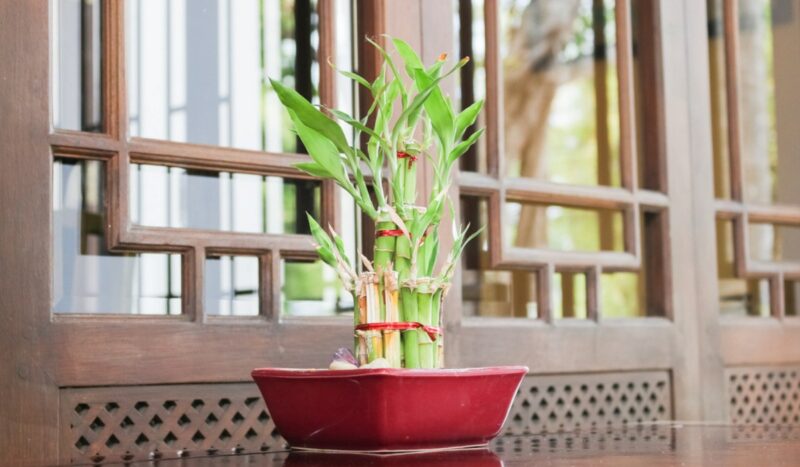
Lucky bamboo is believed to bring good luck to those who are gifted this cute plant, as per Feng Shui. Bamboo is an evergreen perennial flowering plant with tiny leaves and braided stalks. This plant can grow in water or soil, attain great heights, and is nearly indestructible.
It can survive in the shade but requires water. Initially, it can even be grown in a bowl and can be later transferred to the ground. You can use a liquid houseplant fertilizer every month and consider removing yellow leaves, if any. Just ensure to keep the pets away except a panda, perhaps.
4. Spider Plant
- Scientific name: Chlorophytum comosum
- Water requirement: Requires regular watering
- Survival in low light: Yes
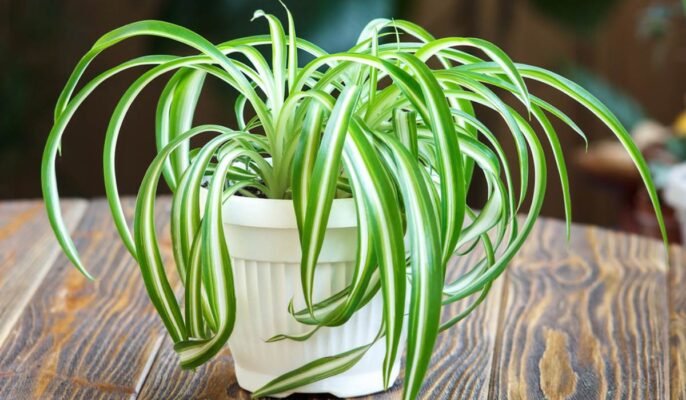
So, the next low-light plant we will suggest is the spider plant. The spider plant gets its name from its star-shaped flowers that grow into siderites. These spider-like green offshoots dangle from the parent plant’s long and slender leaves, resembling the spiders hanging from their web.
These can be grown as trailing plants hanging from the basket or pots. They can manage less light and even survive artificial light exposure. It’s basically a low-maintenance plant; however, it requires regular watering.
5. Snake Plant
- Scientific name: Sansevieria trifasciata
- Water requirement: Requires moderate watering
- Survival in low light: Yes
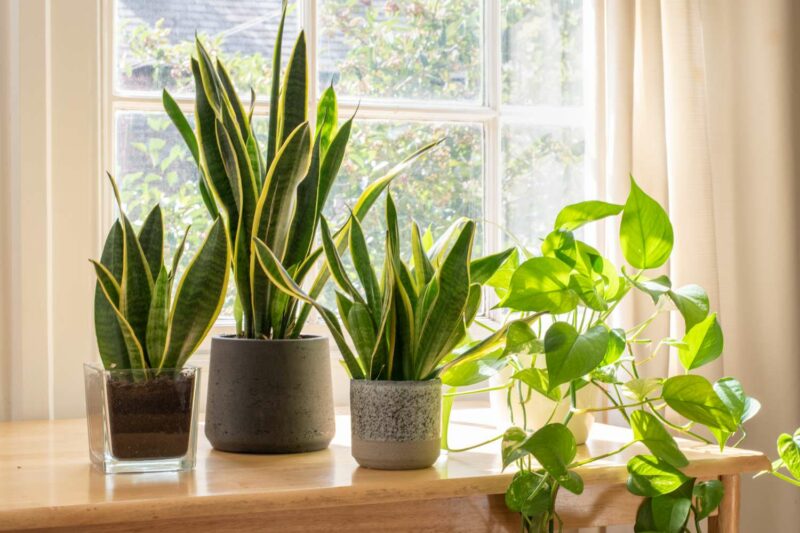
Also known as mother-in-law’s tongue, Saint George’s sword, and viper’s bowstring hemp, the snake plant can thrive for decades. Thick sword-like green leaves grow up to eight feet in height. Being an evergreen perennial plant, snake plants have dark green leaves with light green crossbands.
They are native to the African continent. Snake plants are nearly indestructible and require less maintenance. It can grow in partial or complete shade. One thing you need to be cautious about is not overwatering the plant. Another caution about these plants is that they are toxic to pets and kids.
6. English Ivy
- Scientific name: Hedera helix
- Water requirement: Requires humidity and moisture
- Survival in low light: Yes
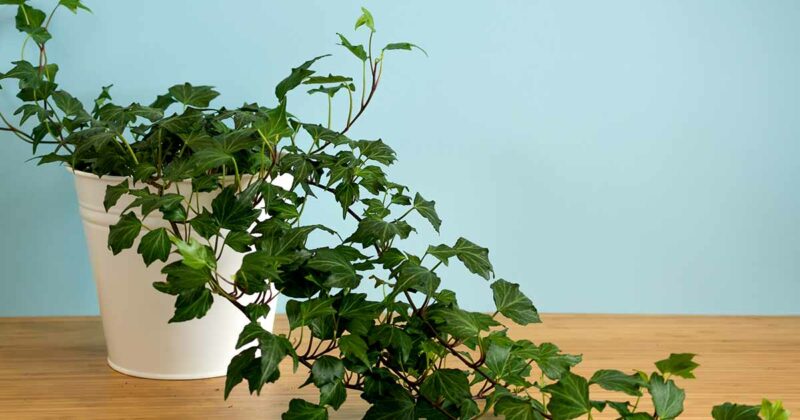
English, European, or poison ivy is mostly found in Asia and Europe. An evergreen climbing plant, ivy is toxic to humans and pets just with more contact. Ivys can grow on their own without human assistance.
If you plan to incorporate this plant indoors, you can choose a shady and isolated corner. You will also need to occasionally mist or spray water on the delicate leaves and maintain adequate humidity. Ensure that the room doesn’t get overheated to prevent the drying out of leaves.
7. Peace Lily
- Scientific name: Spathiphyllum cochlearispathum
- Water requirement: Loves water
- Survival in low light: Yes
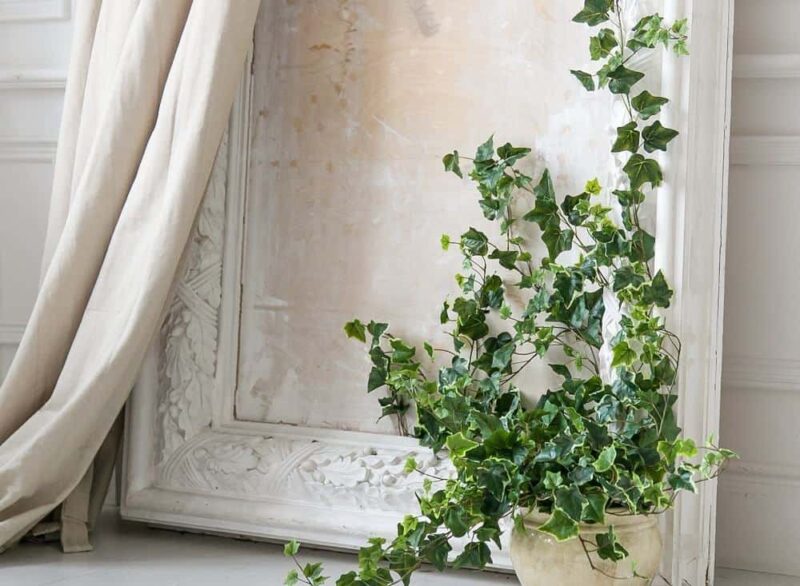
When you want some peace, you can sit amid peaceful lilies. Staring at the large leaves of the peace lily and its rare white flower can help you heal, find peace, and grow a fresh perspective on life.
Peace lilies definitely love growing in the shade and should be kept away from direct sunlight, even indoors. They also love ample amounts of water to grow dense foliage. Furthermore, you may want to keep your pets and kids away from this beautiful plant as they can stir up some trouble for them. Once in a while, you can use organic fertilizers as they are sensitive to harsh chemicals.
8. Boston Fern
- Scientific name: Nephrolepis exaltata
- Water requirement: Loves humidity and moisture
- Survival in low light: Yes
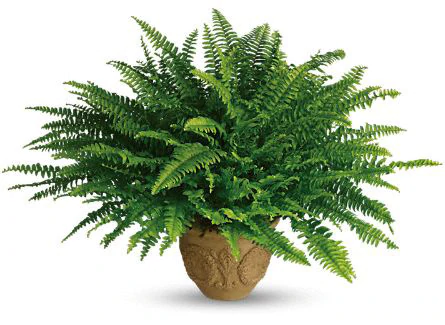
Native to America, Boston fern is also known as sword fern. It generally loves thriving in tropical climates. With dense and bright green foliage, Boston fern can make a nice addition to your home.
They do quality under the low-light plant category. They grow well in shades outdoors but do not tolerate heat and cold waves well. You can just mist the plant when the soil is dry to the touch. Mist prevents leaf drooping. They can benefit from occasional fertilization but avoid using heavy fertilizers every four to six weeks.
9. Dragon Tree
- Scientific name: Dracaena Draco
- Water requirement: Keep the soil damp
- Survival in low light: Yes
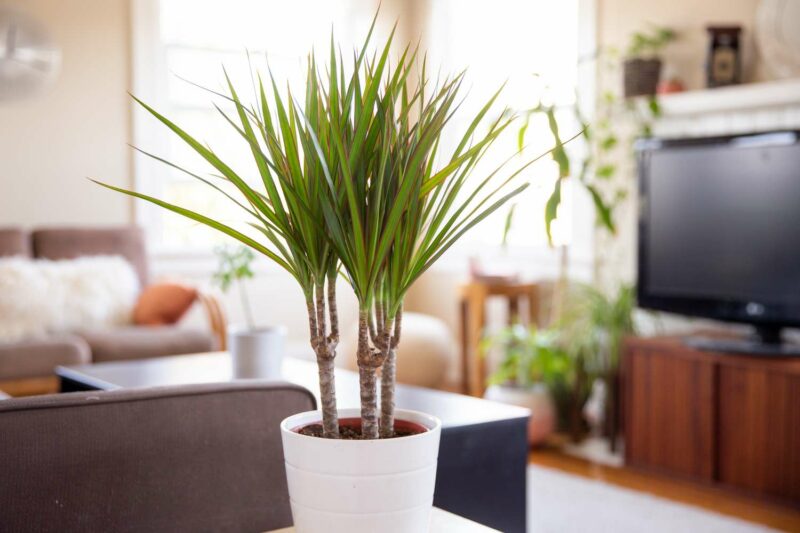
Madagascar dragon tree flaunts slim and arching leaves, with one variety coming in dark red outer edges and another variety flaunting red and yellow stripes. In contrast, the third variety has thick red edges.
It prefers moderate room temperatures and normal household humidity. Misting the leaves is recommended to prevent drying of the soil. The bonsai variety of dragon trees can be grown indoors and grow well in shade away from direct sunlight.
10. Sago Palm
- Scientific name: Cycas revoluta
- Water requirement: Requires a small amount of water once a fortnight
- Survival in low light: Yes
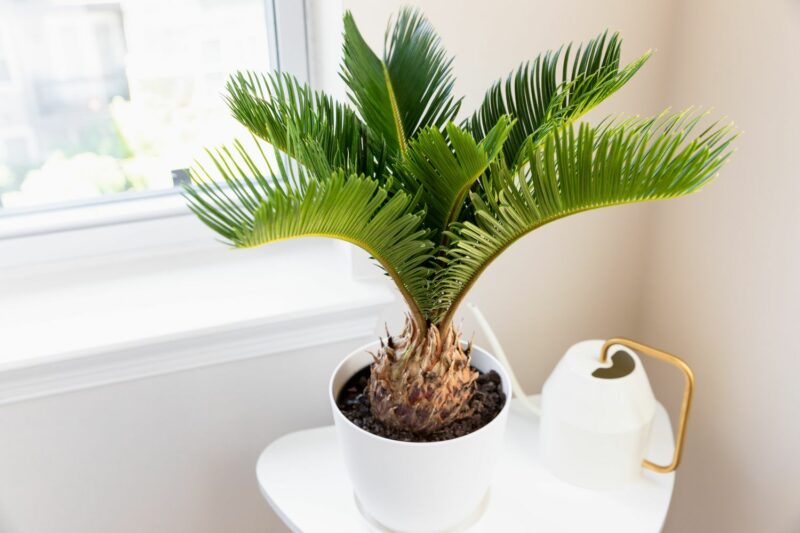
Native to the land of the Samurais, the Sago palm’s only factual relation to true palms lies in both vascular plants and seed plants. Dark green leaves and a thick hairy trunk are characteristic features of the sago palm.
This plant variety is great for people who frequently travel outdoors or abroad for work and don’t have time to water their plants diligently. They are also toxic to pets, so pet parents must be careful while including this plant indoors. Sago palms can survive in direct sunlight as well as low indoor light.
11. Monstera Plant
- Scientific name: Monstera deliciosa
- Water requirement: Water occasionally
- Survival in low light: Yes
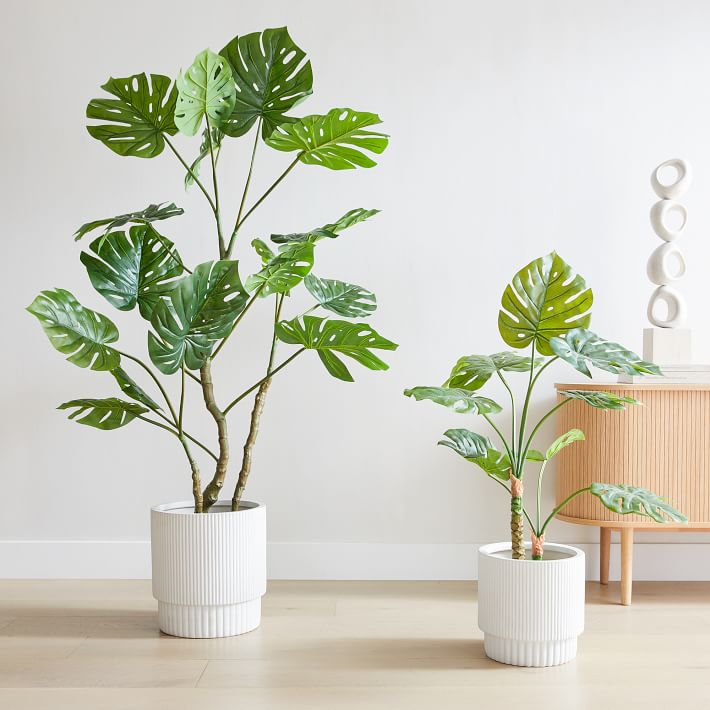
The Swiss cheese plant, the split-leaf philodendron, or the window leaf, is a vine that grows best in hot and humid climates. Poisonous to humans and pets, the Monstera plant can make an addition to your houseplants.
It requires partial sunlight or some amount of dappled light. You will also need a pot with ample drainage. You can water the plant occasionally. Once every few weeks, you can spray a balanced fertilizer.
12. Chinese Evergreen
- Scientific name: Aglaonema commutatum
- Water requirement: Once in seven to ten days
- Survival in low light: Yes
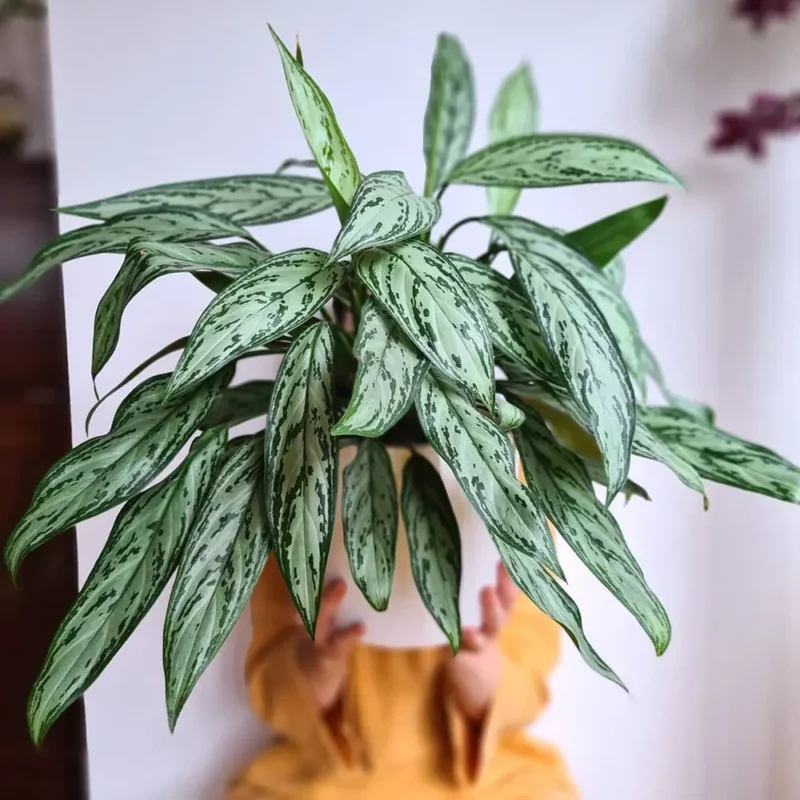
If you want to add tropical elegance to your office or home, then get Chinese Evergreen today. Found in most areas of Asia and New Guinea, Chinese Evergreen best flourishes in tropical and subtropical climates.
It is one of the least maintained indoor plants that need fertilization once or twice a year, can grow even in artificial light, and need watering once a week. This plant presents known toxicity to pets.
13. Fig Tree
- Scientific name: Ficus sycomorus
- Water requirement: Requires moderate watering
- Survival in low light: Yes
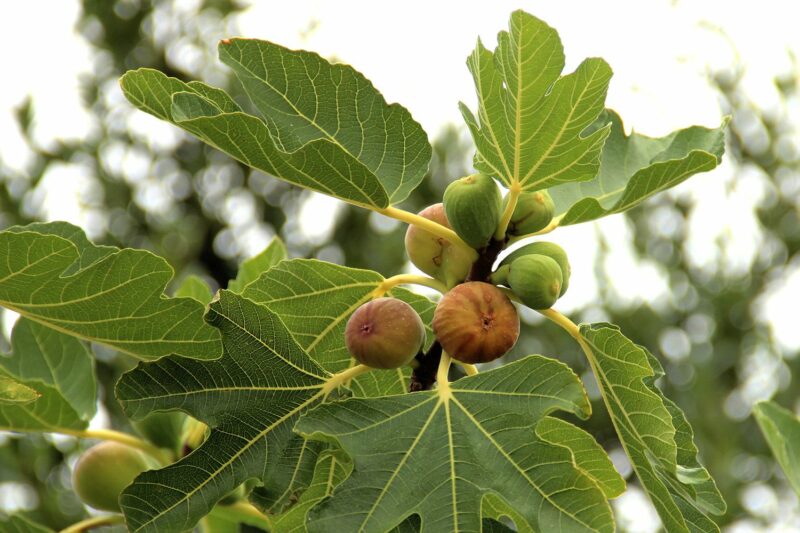
Fig trees have a wide distribution though they are naturally native to Southwest Asia and the Mediterranean region. They flourish in a semi-warm temperate climate.
This evergreen, deciduous plant species requires watering two to three times a week and needs indirect light. The soil should have adequate drainage. This plant is toxic to dogs and cats.
14. Wax Plant
- Scientific name: Hoya carnosa
- Water requirement: Requires moderate watering
- Survival in low light: Yes
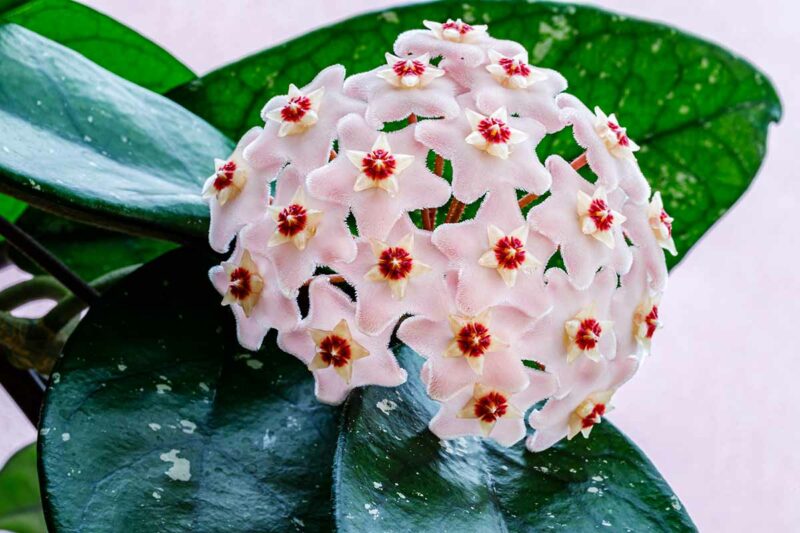
Another low-light plant is the wax plant which has long, slender vines and thick green leathery leaves. It produces white to pink clusters of flowers, also called Porcelain Flowers.
This plant species is non-toxic to pets and thrives in indirect light. You need to water it once a week.
15. Dumb Canes
- Scientific name: Dieffenbachiaoerstedii
- Water requirement: Requires moderate watering
- Survival in low light: Yes

Here is another tropical plant that makes a wonderful addition to the set of houseplants you have. They come in vibrant leaf colors and can make your dullest corner come to life.
These can survive in indirect light and require watering when the top inch of the soil is dry.
16. Gloxinia
- Scientific name: Sinningia speciosa
- Water requirement: Keep the soil moist
- Survival in low light: Yes
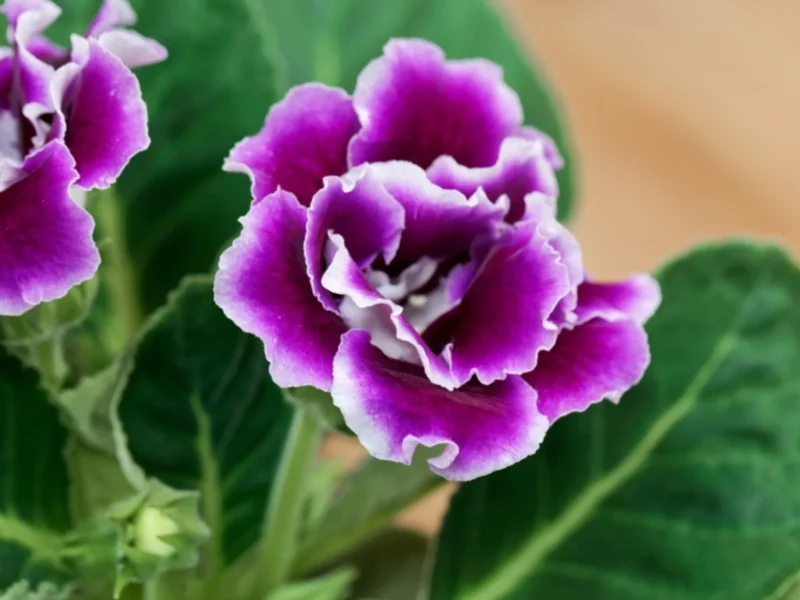
Gloxinia flowering plants can surprisingly survive in a completely dark room. It develops cute, large, velvety flowers in a wide variety of colors but also does well in bright light.
Their presence will obviously make your rooms vibrant and transform the ambiance completely. You can use warm water and use some fertilizers once a month.
17. Cast Iron Plant
- Scientific name: Aspidistra elatior
- Water requirement: Keep the soil moist
- Survival in low light: Yes
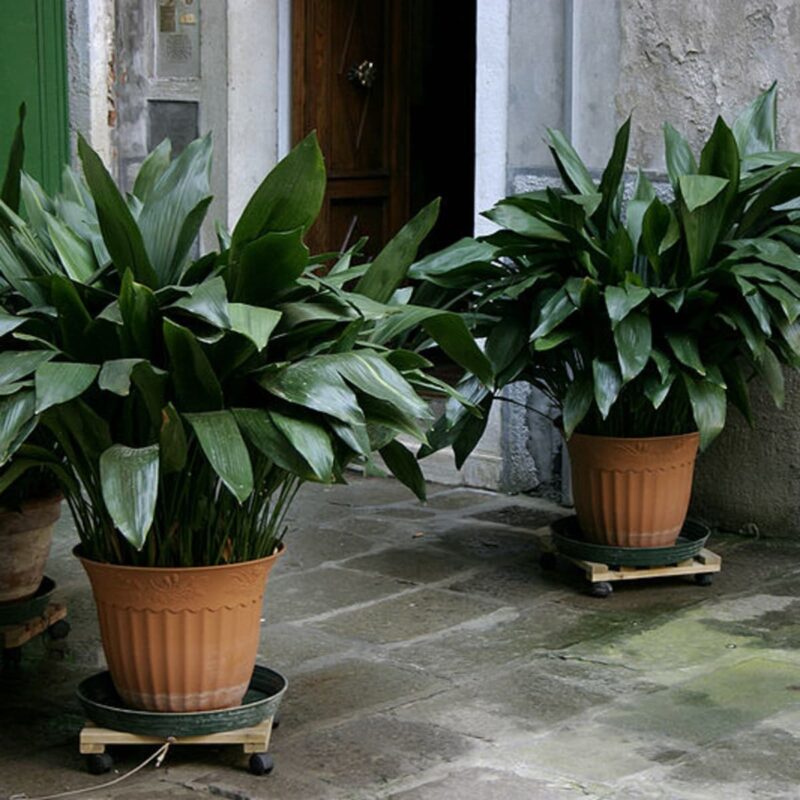
This is one of the best low-light plants suitable to be kept indoors. It can tolerate low but indirect light. Occasional watering is needed when the soil is dry to the touch. Use any kind of well-drainage soil. It can tolerate temperatures between 60-75 degrees Fahrenheit and moderate humidity levels.
It can even live in dark rooms and spreads slowly. You need to keep it away from direct sunlight. It is quite resilient to hard surviving conditions, unlike many other houseplants.
18. Prayer Plant
- Scientific name: Maranta leuconeura
- Water requirement: Keep the soil moist
- Survival in low light: Yes
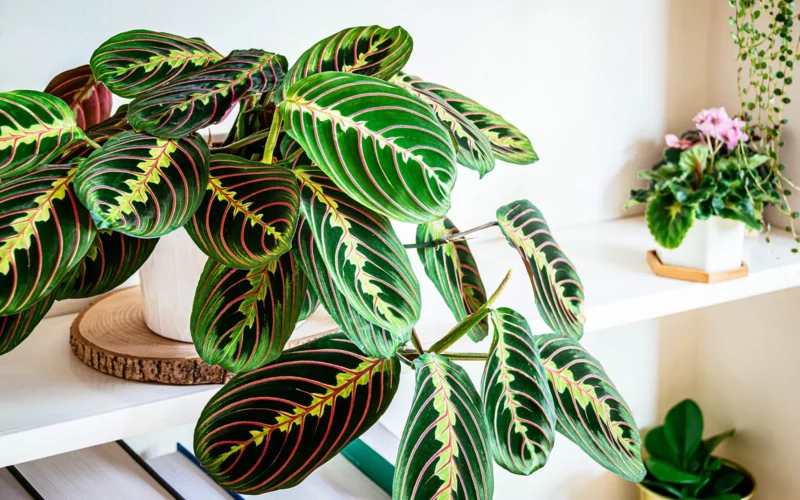
If you have any dull corner, you can immediately turn all attention towards it by placing a pot of prayer-plants. It gets its name from the fact that the leaves of this plant fold up at night as if in prayer and open with the first ray of light in the morning.
It can thrive in low, indirect light and requires occasional watering when the soil is dry to the touch.
19. Peperomia
- Scientific name: Peperomia trifolia
- Water requirement: Keep the soil moist but well drained
- Survival in low light: Yes
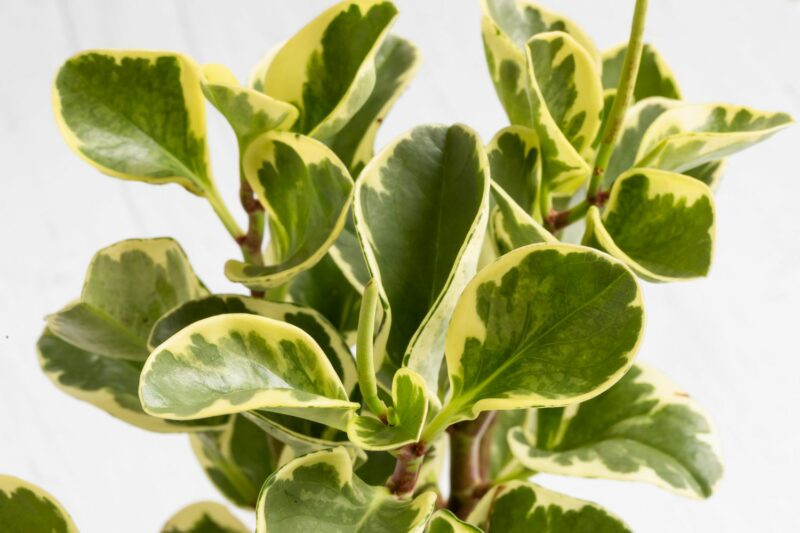
These are perfect for the windowsill and balcony displays. Peperomia is native to South America, Mexico, and the Caribbean islands. Thick, fleshy leaves make them drought resistant.
Thus, they can thrive in less water and light and do not require much maintenance. Ensure that the soil is well drained.
20. Arrowhead Vine
- Scientific name: Syngonium podophyllum
- Water requirement: Keep the soil moist when the soil is dry to touch
- Survival in low light: Yes
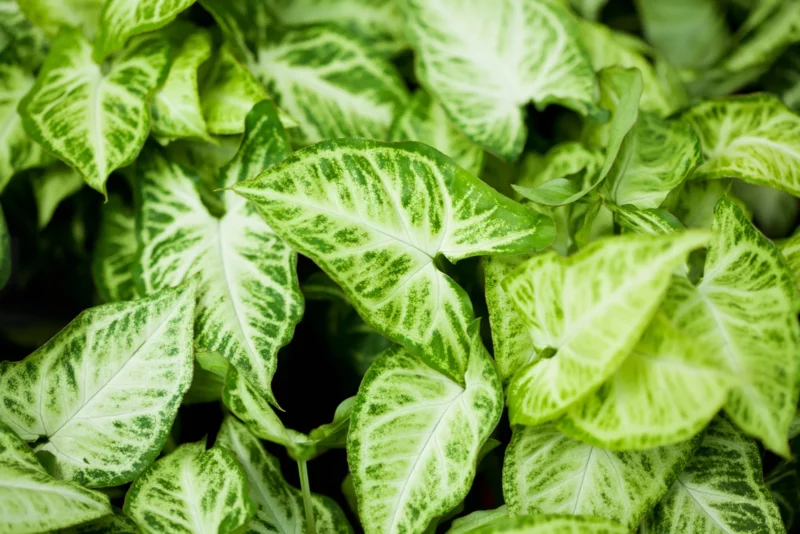
Arrowhead vine showcases bright green, bronze, or variegated foliage. This indoor plant is native to Central America. It is relatively easy to take care of at home and can survive under the same conditions as its relative philodendron. It can thrive in tropical conditions and does well in heat, ample light, and humidity.
It grows well in low to medium light but cannot tolerate direct sunlight. Watering should be done when the soil is dry to the touch.
21. Moth Orchid
- Scientific name: Phalaenopsis philippinensis
- Water requirement: Keep the soil moist
- Survival in low light: Yes
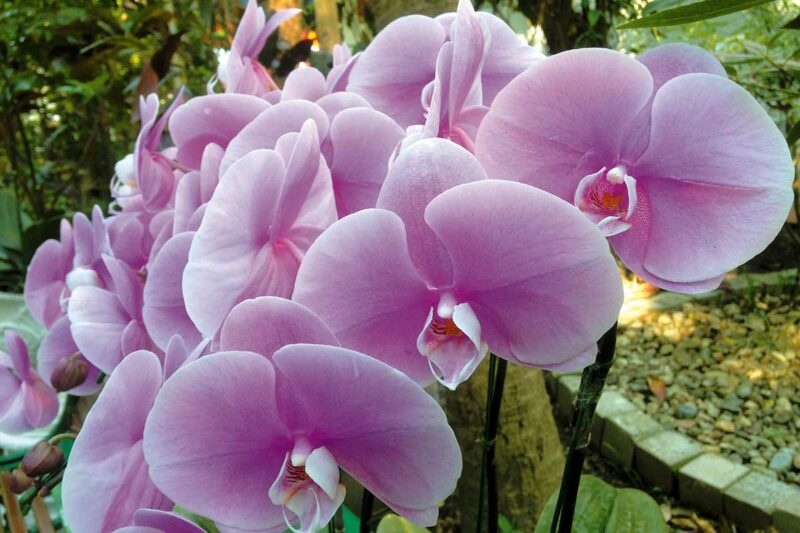
Who doesn’t love orchids? Now if you are a fan of orchids, you can’t miss including moth orchids among your indoor plants. They come in vibrant colors and two sizes. They bloom for up to four months and can do well in low-light conditions.
They should only be watered when the soil feels dry to the touch, but ensure you are not overwatering them.
Benefits of Indoor Plants
Indoor gardening is still a hot trend owing to all the greenery-loving social media influencers. But indoor plants are not just enhancing ambiance and decorating your space. Indoor plants offer numerous health benefits too.
1. Reduce Stress Levels
According to a study published in the Journal of Physiological Anthropology, potting indoor plants reduced the subjects’ stress levels. On the other hand, when the same subjects were asked to perform some online tasks, they showed elevated heart rates and blood pressure.
In many wellness clinics, horticulture therapy is used to help people dealing with anxiety, depression, dementia, and other conditions.
2. Improve the Quality of Indoor Air
Research around phytoremediation began in the 1980s when NASA was trying to find solutions to air quality problems within sealed aircraft. Eventually, they concluded that houseplants can significantly rescue volatile organic compounds from indoor air. Further, recent findings have established that indoor plants can improve air quality equivalent to air purifiers fitted with modern biofilters.
Plants like the Boston fern, Spider plant, Ficus tree, Rubber and Bamboo plants, Dwarf dates, and Areca are some low-light plants that can help people with breathing disorders who now suffer more from air pollution.
3. Boost the Recovery Process from Illness or Injury
Plants boost well-being and aid in speedy recovery from illnesses, injuries, and surgical procedures, according to a review published in 2002. According to the review paper, patients needed fewer pain medications in a hospital with lots of indoor plants than patients who did not look at greenery while recovering.
Final Thoughts
Most of the low-light plants mentioned in our guide will thrive in less light with a window or two in a room. However, if there is no outlet for natural light, you may want to consider turning to artificial light sources for at least a few hours.
You might as well be aware that low-light plants that do well outdoors in the shade may require some light to survive indoors too. But make sure that they are not put in direct sunlight, even indoors, that can scorch their leaves. This is because none of us like killing plants in our homes.
All these plants require less maintenance. Succulents not only need less light but also less moisture and water. So, even if you travel out frequently for work, these plants can manage well in your absence.
You may want to notice that some of these plants might be toxic to your pets and you. However, some of the plants are beneficial too. So, get home some indoor plants today and revamp your space.
Frequently Asked Questions
Is Spider Plant Low Light?
Yes, spider plants can survive in less light, even though they prefer some indirect bright light exposure once in a while. So, you might need to keep them near windows. But don’t place them directly exposed to sunlight; otherwise, they may ruin the leaves.
What Flowers Don’t Need Sunlight?
Flowers are perhaps one of nature’s most wonderful creations. Flowering plants that can grow well indoors or in the shade are Begonia, Hoya plant, Bleeding Heart, Coleus, Solomon’s Seal, Geranium Cranesbill, and more. These plants can grow, and their flowers can bloom in low light.
Are Ferns Low-Light Plants?
Ferns can somehow digest low-light situations. Therefore, you might want to put them under shades outdoors. Ferns, in general, can grow in shady regions adapted to both tropical and temperate environments. They can grow on rocks as well as soil.





